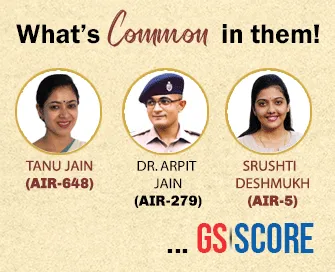

11th January 2024 (10 Topics)
Context
In the states like Maharashtra and West Bengal the child marriage again saw an uptick in past 5 years.
Case of Maharashtra
- Data from the Ministry of Women and Child Development show that across Maharashtra, there were 13 reported instances of child marriage in 2018; 20 in 2019; 50 in 2020 and 82 in 2021.
- However, statistics compiled by an NGO, the Committee of Resource Organisation, show that 10 instances of child marriage took place in 2018; 30 in 2019; 45 in 2020 and 71 in 2022, in the districts of Beed and Latur alone.
- However according to the social workers, the unreported cases far outweigh reported ones.
Pertinent identified Reasons
- The farmers working in the sugarcane fields in lathur and beed districts, due to their socio-economic conditions marry off the girls at an early age.
- The families take their girl child to work in sugarcane fields, however this is just a temporary as they are married off at an early age due to the fear of sexual violation of girls.
- They prefer to marry them due to prevailing social challenges, poverty which force their choices to be limited.
However the Child marriage is a social ill which has roots so engrained that another 25 years might take to eradicate it. Though for this to happen we need to tackle the issue of poverty, illiteracy and make social changes more inclusive so that it penetrates deep down at all levels and classes of society.
All India analysis of issues related with Child Marriage
Child marriage persists in India due to a confluence of factors, deeply rooted in societal norms and economic challenges.
Causes:
- Poverty and Social Norms: Economic hardship, coupled with ingrained social norms, perpetuates child marriage, especially in regions like West Bengal.
- Migration and Security Concerns: Families, in fear for their daughters' safety, resort to early marriages before migrating for work, particularly noted in West Bengal.
- Policy Implementation Gaps: Despite prevalent child marriages, there is a substantial gap in enforcing laws like the Prohibition of Child Marriage Act, as seen with only 105 cases registered in West Bengal in 2021.
Impact on Health:
1. Health Risks:
- Child marriage contributes to higher infant mortality rates, as illustrated by the distressing incident at Murshidabad Medical College.
- Infants born to child brides often face extremely low birth weight, a pervasive health issue.
- Young mothers experience heightened risks during pregnancy and childbirth, imposing a burden on both maternal and infant health.
- Persistently high rates of child marriage, such as 41.6% in West Bengal, indicate a broad health crisis affecting multiple generations.
2. Education Disruption: Early marriages curtail a girl's education, limiting her future prospects and economic independence.
Human Rights Implications:
Child marriage poses a severe threat to human rights, particularly concerning:
- Right to Education: The premature end to a girl's education violates her right to education, impeding personal and socio-economic development.
- Right to Health: The health risks associated with early pregnancies infringe upon the right to health, compromising both maternal and child well-being.
Initiatives Undertaken:
- Kanyashree Prakalpa: West Bengal's cash transfer scheme incentivizes girls' education, discouraging child marriage and benefiting around 81 lakh girls.
- Rupashree Prakalpa: A cash incentive scheme for girls' marriages, aimed at delaying the age of marriage.
- Legal Age Amendment: The introduction of the Prohibition of Child Marriage (Amendment) Bill, 2021, seeks to raise the legal marriage age for women to 21.
- District Action Plans: In 2022, West Bengal initiated district-specific plans to combat child marriage, emphasizing localized solutions.
The Way Forward:
Addressing child marriage necessitates a multifaceted approach:
- Social Campaigns: Engage in robust awareness campaigns to alter societal attitudes towards child marriage.
- Community Involvement: Encourage community participation to challenge norms and promote education.
- Stricter Law Enforcement: Ensure rigorous enforcement of existing laws, like Kanyashree Prakalpa, through political will and public pressure.
- Comprehensive Policies: Develop comprehensive policies that encompass education, healthcare, and socio-economic empowerment to address the root causes of child marriage.
In tackling child marriage, a holistic strategy combining legal, social, and economic aspects is imperative, underlining the need for sustained efforts to protect human rights and foster societal progress. This issue demands continuous attention and innovative solutions at both the policy and grassroots levels.

